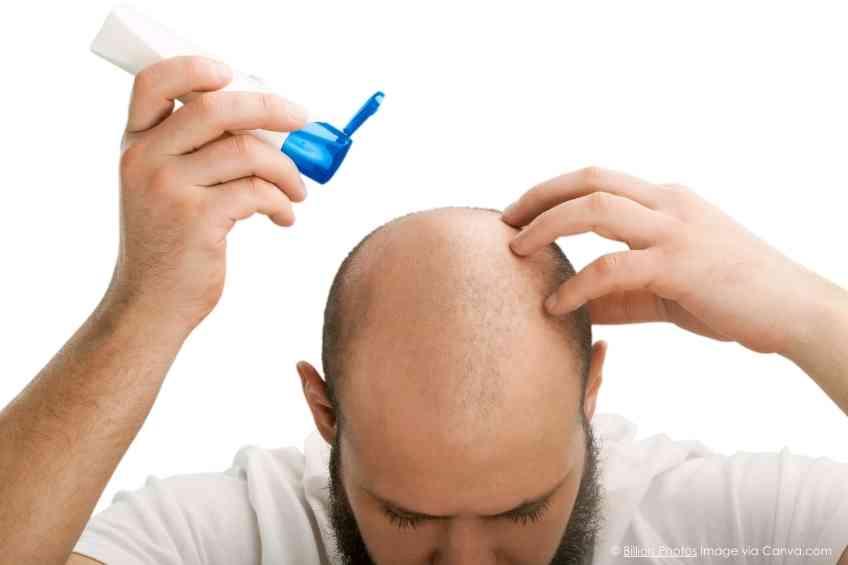By John Salak –
Men study their scalps like archeologists, dreading the day when they discover a sign of male pattern baldness. The reality is that 30-50 percent of men are going to experience this phenomenon by the age of 50. Typically, hair loss starts around the temples, creating an “M” or “U” shape before it proceeds to the crown of the head, marking the beginning of the battle against balding.
Despite this unrelenting and virtually inevitable wave of male baldness, the science behind why it happens and how to prevent or reserve it is shaky at best.
Science knows that hair follicles are stimulated by a hormone called androgen. Balding occurs when the hair follicles begin to shrink, thinning out hair before the follicle completely disappears, leaving no hair growth, the Cleveland Clinic reports.
It is commonly believed that the genetics of balding can be traced to the mother’s side of the family. That take is only partially correct. Genetics does play a role in the balding process, but there is no science that shows balding only comes from the mother’s side. Unfortunately, if someone’s father is bald, there is a good chance that the male offspring will also be bald.
Stress is another theoretically cause or contribution to hair loss. Again, this is at least partially true. A traumatic event such as a surgery or a psychosocial stressor can cause telogen effluvium which results in the excessive shedding of hair. General, everyday stress can cause men to lose their hair as well, but usually not in fistfuls at one time.
The bigger issue for men going bald isn’t why it is happening but rather how to treat it. Dermatologists most often recommend two solutions. The first is minoxidil, which is more commonly known as Rogaine. Typically, Rogaine is applied topically with the goal of regrowing hair. It can also be taken in pill form. Unfortunately, the pill does not always guarantee hair growth in the desired area. It could grow hair, for example, on the chest or armpit instead of the head. Also, there is no guarantee whether applied topically or taken as a pill that Rogaine will regrow hair at all, although studies have shown that it will slow or stop hair loss in about half the men that use it. These reports indicate a smaller percentage of users report new hair growth.
The other common treatment option is finasteride or Propecia. It is taken in pill form as its topical versions have not yet been approved by the Federal Drug Administration. Unlike Rogaine, Propecia focuses on slowing hair loss, although research has reported it can also help promote new hair growth in some cases. Propecia also comes with somewhat common and troubling side effects, including lowering sex drive and erectile dysfunction.
Once these treatment methods start it is important to stick with them. Stopping either of these treatments results in the decay of any progress made.
“It’s generally accepted that combination treatment works better than anything by itself,” Dr. Carolyn Goh, an associate clinical professor of dermatology at UCLA Health told the New York Times.
There are more expensive treatment options to fight baldness that go beyond drugs. The first focuses on hair transplants. The name says it all: a surgeon will remove hair follicles from one part of the body to another. A hair transplant will take time for the hair to regrow and does not fix a receding hairline. The cost of a hair transplant starts at $7,000.
Another costly option is platelet rich plasma injections. During this procedure, blood is taken from an individual, the plasma is removed from the blood and injected into one’s scalp. A recent analysis of studies on platelet-rich plasma injections reports that they are safe and can work. But success isn’t guaranteed. There is also only limited research done on the process to date.
Beyond this, these injections are expensive. Sessions can cost as much as $1,500 each and complete treatments usually require at least three to four injections.
Finally, low level laser light therapy is an alternative approach to hair loss. Helmets with this technology can cost $2,500. There is the risk that many of these options are scams. However, one study found that stimulating hair with a laser device can result in hair growth, but again research is sparse and there is no guarantee of success.
And yes, there are always natural options being touted to help hair growth. None, unfortunately, have scientific backing. However, hair health, which includes limiting loss, can be enhanced through a proper diet that contains sufficient protein and certain vitamins and minerals, including B vitamins, along with vitamins A, C, D and E as well as iron, selenium and zinc.
Hair loss may not be painful, but it is scary for many men. Science to date can only partially allay these fears.













